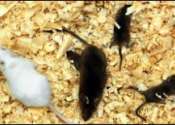Tarantula toxins offer key insights into neuroscience of pain
When your dentist injects lidocaine into your gums, the drug blocks the pain of the oncoming drill, but it also blocks all other sensation – leaving your mouth feeling numb and swollen. What if there were a drug that could ...








